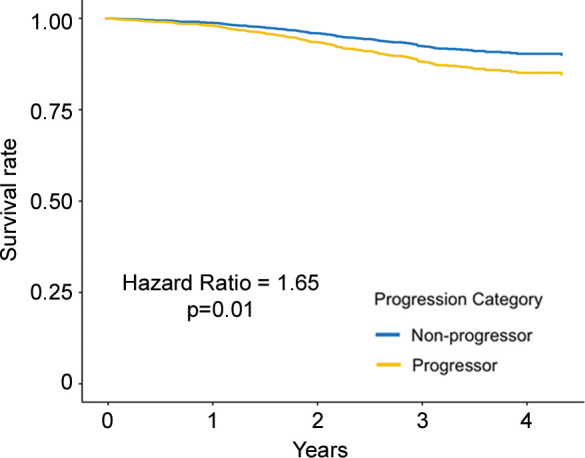Figure 3a:

Adjusted survival curves created by using the corrected group prognosis method and by using multivariable Cox models adjusted for ethnicity; sex; baseline age; baseline pack-years of cigarette use; baseline percent predicted expiratory volume in 1 second; baseline volume-adjusted lung density measured at the 15th percentile of the CT lung density histogram (referred to as lung density perc15); and change in scanner model, body mass index, CT-measured lung volume, and smoking status. Survival curves of (a) COPDGene cohort (participants with emphysema at baseline) and (b) Evaluation of Chronic Pulmonary Obstructive Disease Longitudinally to Identify Predictive Surrogate End-points (ECLIPSE) cohort (participants with emphysema at baseline) show progressors who had a decrease of lung density perc15 more than the repeatability coefficient and nonprogressors who did not. Survival curves of (c) COPDGene cohort and (d) ECLIPSE cohort progressors in whom the rate of lung density perc15 decline was faster than the distribution-based minimum clinically important difference on the basis of the rate of change in never-smoking healthy participants.
